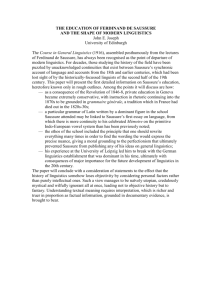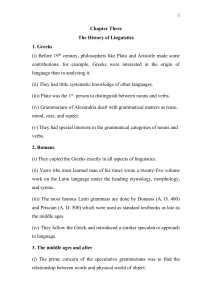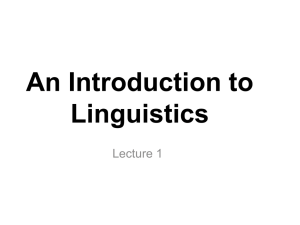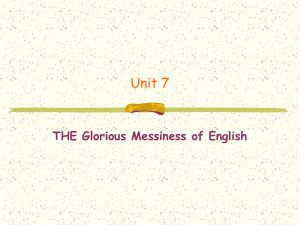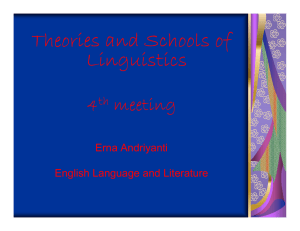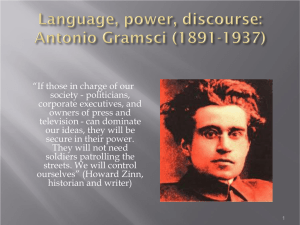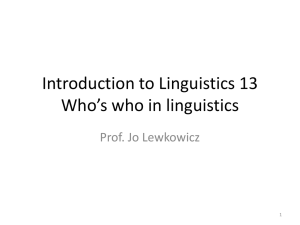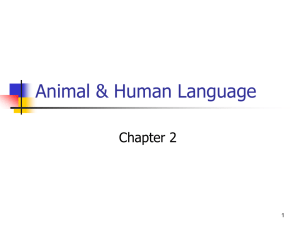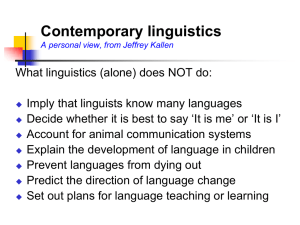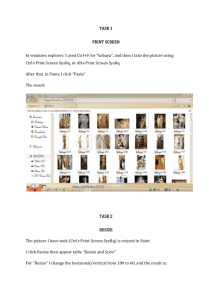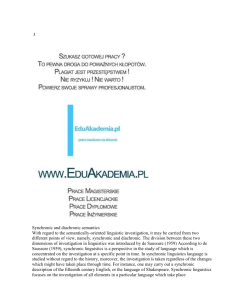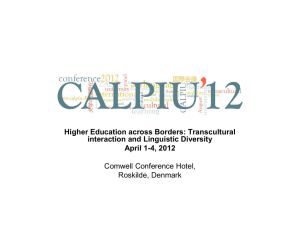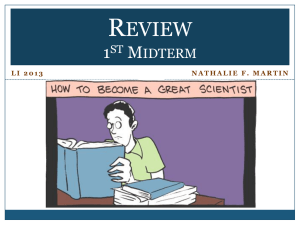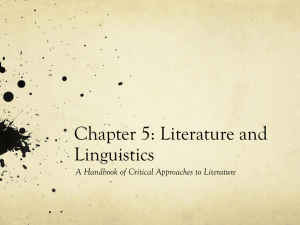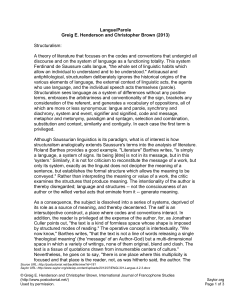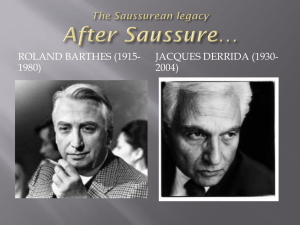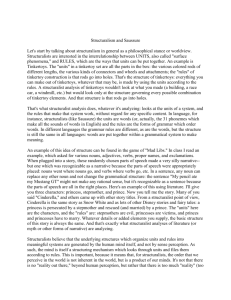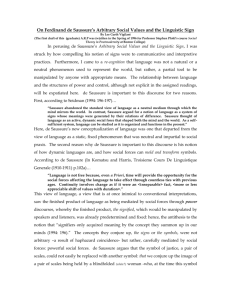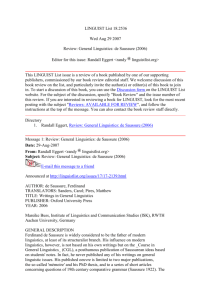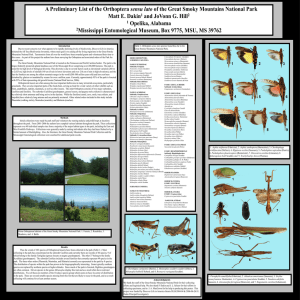Linguistics ppt - marilena beltramini
advertisement
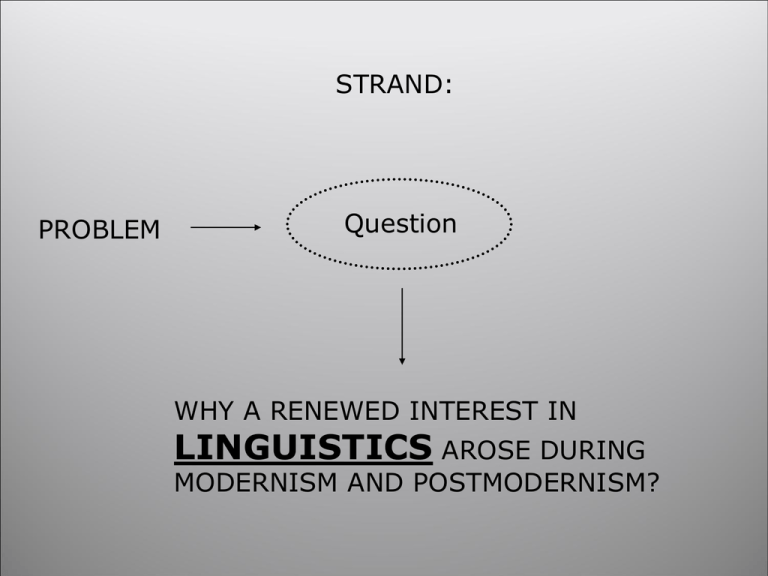
STRAND: PROBLEM Question WHY A RENEWED INTEREST IN LINGUISTICS AROSE DURING MODERNISM AND POSTMODERNISM? WHAT LINGUISTICS IS Linguistics: 1. pl.n (functioning as singular) the scientific study of language. Collins Concise English Dictionary 2. the scientific study of language and its structure. Concise Oxford English pl.n (treaded as singular) Dictionary. 3. the scientific study of language and its structure, including the study of grammar, syntax, and phonetics. Specific branches of linguistics include sociolinguistics, dialectology, psycholinguistics, computational linguistics, comparative linguistics, and structural linguistics.The Oxford English Dictionary. pl.n (treated as singular) History of linguistics Until the 19th century linguistics spoke mainly about letters not sounds. Modern linguistics shifted the focus from historical concerns of changes over time to the idea that language can be viewed as a selfcontained and structured system situated at a particular point in time. The swiss linguistic Ferdinand de Saussure is widely acknowledged as the key figure in this refocusing of interest and the father of modern linguistics. WHO WAS SAUSSURE? •Ferdinand de Saussure (Geneva,1857- Vaud,1913) was a swiss linguistic whose ideas gave the foundation for the development of modern linguistics in the 20th century. •After an initial period at university studying chemistry he left the studies of scientific subjects to focus on liguistics. •Saussure's most renowed work, Course in General Linguistics (Cours de linguistique générale), was published in 1916 by Charles Bally and Albert Sechehaye (former students) on the basis of notes taken from Saussure's lectures in Geneva. •Saussure believed that semiology was a science able to study signs, so linguistic was a branch of semiology. DIFFERENCE BETWEEN “LANGUE” AND “PAROLE” LANGUE PAROLE It’s the social moment of language. Language is composed by codes and structures of rules, always without the opportunity to change or invent them. It is the Individual moment of language. It’s the individual way of using the linguistics code. DIFFERENCE BETWEEN SIGNIFIER AND SIGNIFIED SIGNIFIER n.linguistics a sign’s physical form (such as a sound, a printed word, or image) as a distinct from its meaning. Concise Oxford English Dictionary. The instrument used to express the signified. SIGNIFIED n.linguistics the meaning or idea expressed by a sign, as distinct from the physical form in which it is expressed. Concise Oxfod English Dictionary. What the sign expresses Elements not separable •Linguistic previous Saussure was historicalcomparative. • According to Saussure the “diachronic” range of language had been privileged compared to the “synchronic” sphere. • To Saussure the synchronic aspect was far more important. • a mathematicalquantitative consideration of language became possible. Even if he didn’t talk about structure Saussure left and inheritance to structuralism: • idea of the systemic nature of language. • Idea of the supremacy of language over speaking. (We produce ourselves in language J.Winterson) • Idea of hegemony of synchrony over diachrony. Central ideas: • no author • no truth • no meaning (meaning is always different J.Derrida) Ppt made by: Bianco Annalisa Florio Silvia Gaddi Lisa Girardi Cristina Gradito Ylenia As. 2012-2013 Cl 5°B
